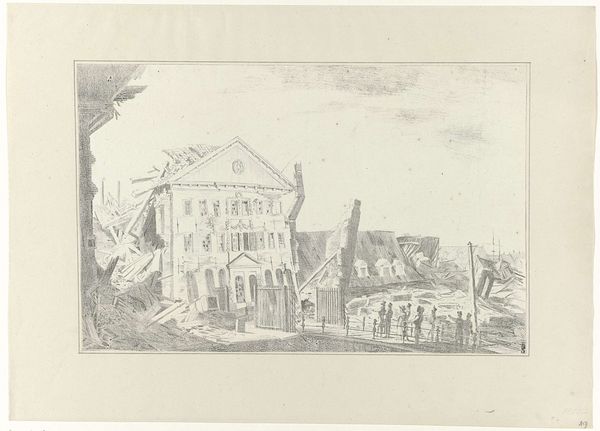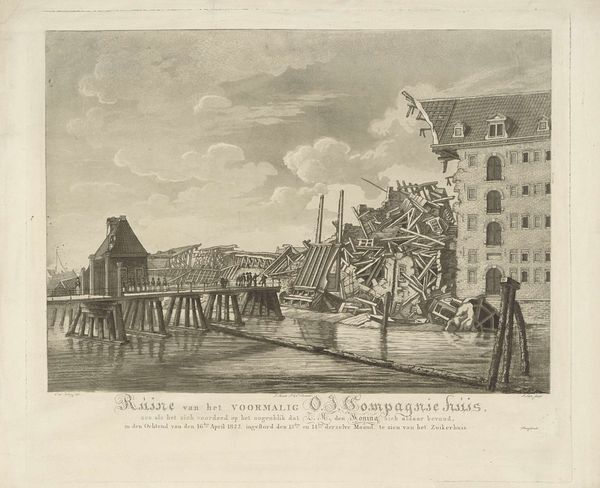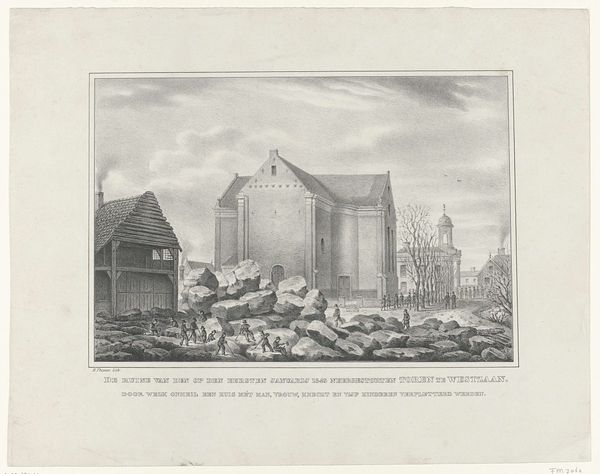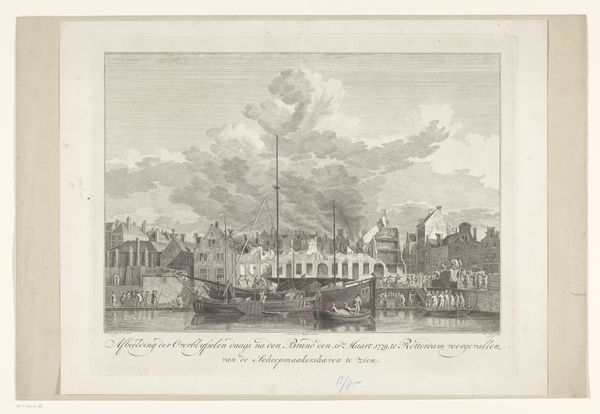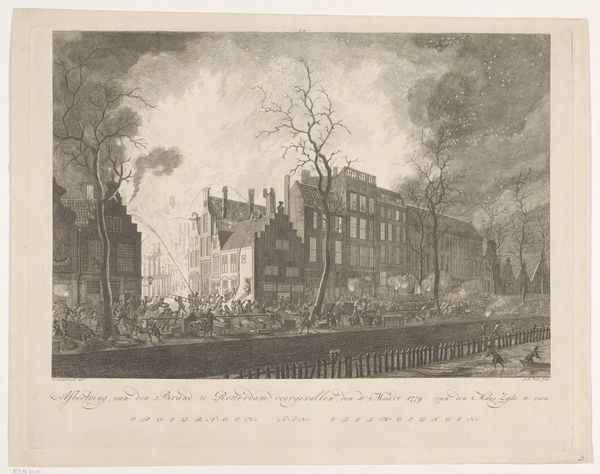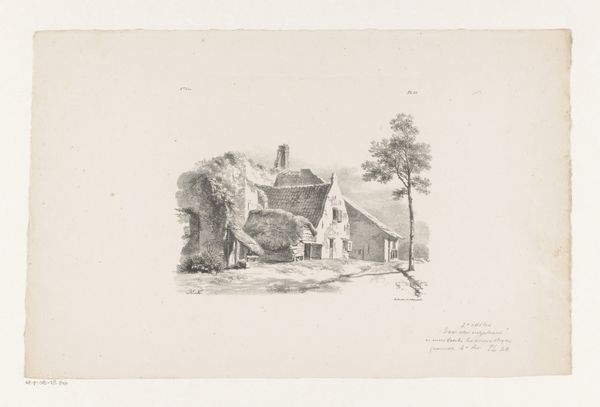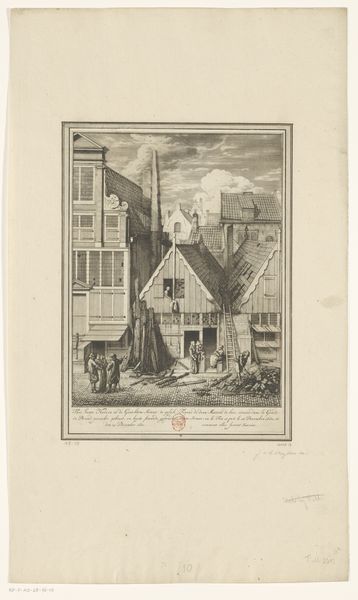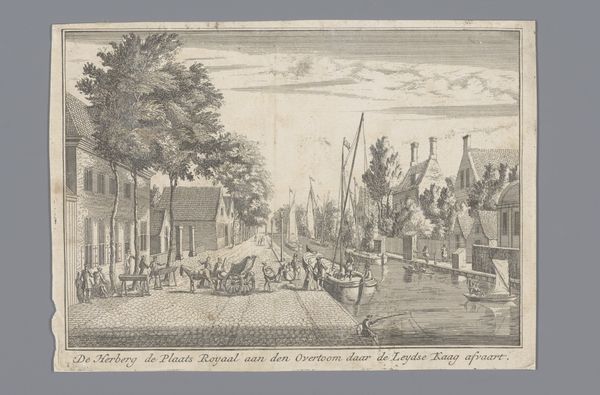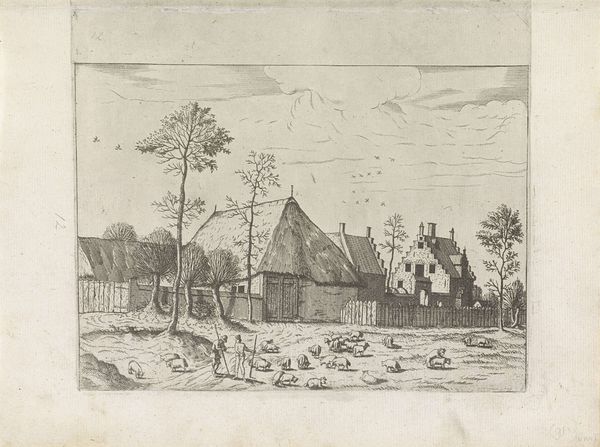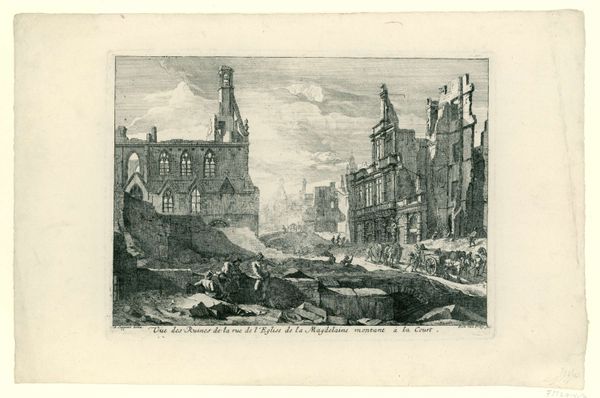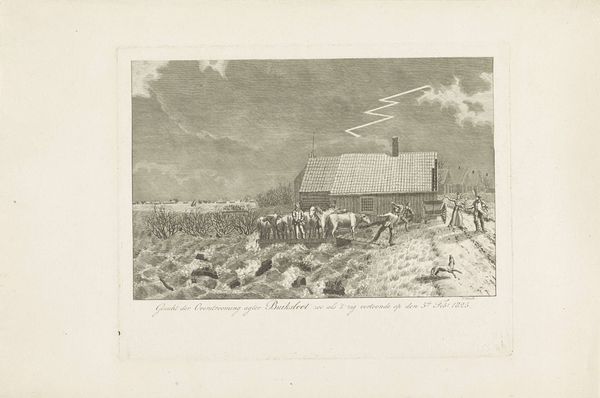
drawing, print, paper, ink, engraving
#
drawing
# print
#
landscape
#
paper
#
ink
#
romanticism
#
cityscape
#
history-painting
#
engraving
Dimensions: height 291 mm, width 376 mm
Copyright: Rijks Museum: Open Domain
Curator: Here we have Jacob Plügger's "Ruin of the East India Company Warehouse," made in 1822. The media used appear to be ink on paper to make this print. Editor: My immediate impression is of profound disquiet. The meticulous lines of the engraving style clash with the chaos of the scene, creating a disturbing tension. Curator: Precisely. Plügger masterfully uses line and tone to guide the viewer’s eye, from the dark, fractured timbers in the foreground to the distant skyline, constructing a scene rife with loss. Note the structural integrity—or lack thereof, with that large pediment slowly sinking due to missing supports and an overall failure of vertical thrust. Editor: It is quite striking how the meticulous rendering highlights the brutal destruction of the warehouse. I think about the labor, the resources poured into this building now rendered useless. Its materiality laid bare—broken timbers and shattered brick—becomes a stark commentary on the fragility of empire and the transient nature of even the most powerful trading entities. Curator: One cannot ignore how the survivors in the background serve to create scale, dwarfed by the devastation surrounding them, while the overcast sky pushes the warehouse upwards into the composition—further emphasizing the enormity of the ruin. This Romantic sensibility towards disaster is fascinating; Plügger uses light and shadow not just to represent space, but to communicate emotion. Editor: And considering the context, these materials sourced from across the globe, refined, assembled, stored, then abruptly undone in a single catastrophic event… I’m really drawn to how such events, especially accidents such as these, redirect resources towards repairing social order after extreme disruption. The printmaking would, in turn, become part of such mending of a cultural wound. Curator: It’s compelling how Plügger uses a print—a medium traditionally associated with dissemination of information and order—to represent disorder, reminding us that even the most rational artistic strategies must eventually succumb to time’s arrow. Editor: Thinking about the implications and sheer cost in raw materials certainly changes how I perceive the work.
Comments
No comments
Be the first to comment and join the conversation on the ultimate creative platform.
